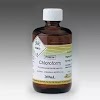Polymers- Mechanism of Drug release
Polymer is a macromolecule having different properties. The drug release mechanism of polymer are disscused on below.
1. Dissolution
 |
| Figure 1: Drug release by dissolution controlled mechanism of polymer |
2. Diffusion
Diffusion occurs when the drug passes from the polymer matrix into the external environment. In controlled drug delivery system, drug is homogenously dispersed in a polymer matrix (monolithic matrix system) or drug (solid, dilute solution or highly concentrated solution) within a polymer matrix and surrounded by thin film ( reservoir system). Diffusion occurs when the drug passes from the polymer matrix into the external environment. With the passage of time and continous drug release, the delivery rate normally decreases in these type of system since the bioactive agent has to traverse a long distance progressively and thereby requires a longer diffusion time for ultimate delivery of drug(s). In swelling controlled drug delivery system, drug release by swelling of polymer followed by diffusion of drug with or without dissolution (Figure
 |
| Figure 2: Drug release by diffusion controlled mechanism of polymer |
3. Dissolution and Diffusion
Drug release by dissolution of polymer followed by diffusion of drug. In controlled drug delivery system consist of the drug core enclosed in partially soluble membrane. Dissolution of part of outer membrane leads to facilitated diffusion of the contained drug through pores in the coating by dissolution and diffusion controlled release mechanism of polymer. [1]
Read More
4. Erosion [2]
 |
| Figure 3: Drug release mechanism by erosion |
 | |
|
C) The active agent is homogeneously dispersed in a polymer and drug release from this monolith is controlled by diffusion, by a combination of diffusion and erosion, or by erosion (Figure 5).
 |
| Figure 5: Drug release mechanism by erosion |
5. Ion exchange [1]
Drug release by reversible exchange of ions ( in drug-ion exchange resin complex). Ion exchange resins are used to sustain the effects of drugs based on the concept that negatively or positively charged drug moieties combine with appropriate resins producing insoluble polysalt resonates. Where R-SO3-H+ and R-NH3+OH- represents cationic and anionic resins, respectively, whereas H2N-A and HOOC-B depicts basic and acidic drug respectively. Where administered orally resins come in contact HCl with pH 1.2 following reaction take place.
R-SO3-H+ + H2N-A → R-SO3- + H3N+ -A
R-N+H3- + HOOC-B → R-N+H3-OOC-B + H2O
Subsequently, when the system reaches intestine, where it is exposed to a fluid of slightly alkaline pH, following reactions occur.
R-SO3-H3N+-A + HCl → R-SO3-H+ + A-N+H3Cl-
R-N+H3-OOC-B + HCl → R-N+H3-Cl- + B-COOH
R-SO3-H3N+-A + NaCl → R-SO3-Na+ + A-N+H3Cl-
R-N+H3-OOC-B + NaCl → R-N+H3Cl- + B-COO-Na+
6. Stimuli Response
References
1. S.P. Vyas, Roop K. Khar, Controlled Drug Delivery - Concepts and Advances, 1st ed: 2002, Vallabah Prakashan, Pg.No: 1-50, 294 – 229, 411-446.
2. Joseph R. Robinson, Vincent H. L. Lee, Controlled Drug Delivery Fundamentals and Applications, 2 nd ed, Marcel dekker, inc, Pg.No : 192-209.









0 Comments